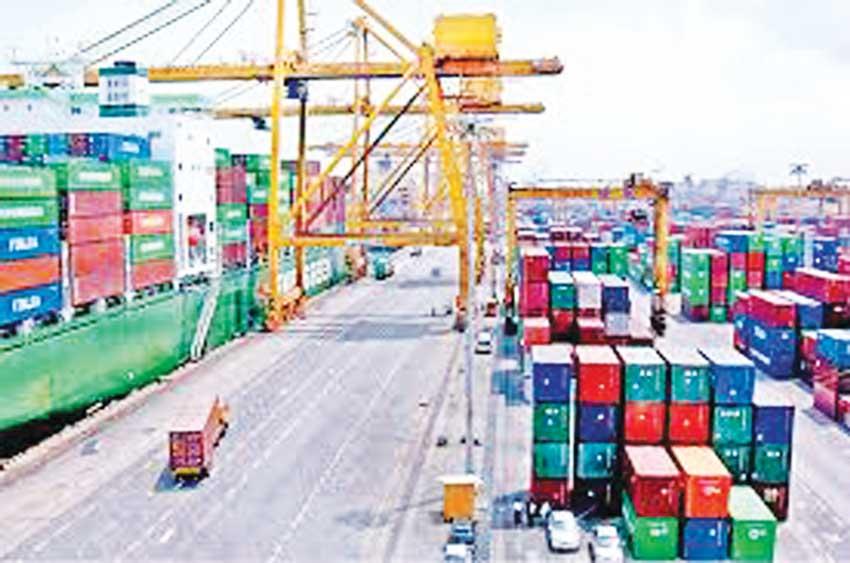Reply To:
Name - Reply Comment

There were signs of excessive imports of certain categories up to July this year, reflecting front-loading by a section of traders, a claim, which was repeatedly made by the Central Bank, while partly attributing it to the current undue pressure on the dollar-rupee exchange rate.
The import data for select categories of goods, on which the Central Bank further tightened the noose from last week, provides clear evidence of spikes in imports of some of these key categories in comparison to the imports of the same categories of goods in the whole of 2019 and 2020.
The Central Bank last week required importers of some 623 goods to place 100 percent cash margin deposit against Letters of Credit to preserve the stability of the foreign exchange market as it believed that the recent imbalances were caused by, “excessive imports that are speculative in nature”.
Though difficult to entirely establish, this observation is partly affirmed by the the inventory levels of some select importers of durable goods, reflecting signs
of stockpiling.
For instance, import expenditure on telecommunication devices category consisting of mobile and fixed telephones, the largest of all categories, which became subject to the restrictions, reached US$ 250.3 million in the first seven months of 2021 compared to US$ 268.4 million spent in the whole of 2020 on such items and surpassing US$ 247.3 million in 2019.
Meanwhile, the import of home appliances, the second largest category, had an expenditure value of US$ 160.6 million in the seven months to July 2021, slightly under US$ 171.7 million spent during the entirety of 2020 and US$ 203.8 million in 2019.
Under the current pace, expenditure on these imports were primed to reach US$ 275.3 million for the full year of 2021, registering 35 percent increase from 2019 levels when the conditions were normal than in 2020.
Partly mirroring these developments, Singer (Sri Lanka) PLC, the country’s largest mobile phone vendor and the consumer durables retailer, which also has limited domestic manufacturing operations, had reflected an increase in their inventory levels continuously from the beginning
of 2021.
For instance, the group inventory rose to Rs.20.29 billion by the end of June 2021 from Rs.13.98 billion in December 2020, an increase of Rs.6.31 billion. While there could be an element of stockpiling, it makes full sense form the company’s standpoint to hold a bit more higher stocks given the uncertainty and the double-digit growth in sales experienced in every quarter since September last year through March 2021 before slowing down to mid single-digit in the June 2021 quarter due to pandemic related disruptions.
People and firms engaged in imports anyway tend to bring more than their required quantities when there is uncertainty over their future ability to import and also to avoid paying higher rupees to buy dollars due to the expected depreciation.
However, the higher import numbers aren’t conclusive of the argument of import front-loading in every case as there are other reasons, which may have also driven these imports.
For instance, the spike in telecommunication devices and home appliances imports could have also been a result of higher consumer demand supported by easy monetary policies and the less restrictions on the economy compared to last year.
Demand for mobile phones in particular surged in 2020 and more so in 2021 due to continued restrictions on in-person economic activities. Mobile phones with larger screens became favourites among a large majority for their remote work and learning. While the current stocks cannot create a shortage of these goods in the near term, as larger players in particular have stocks sufficient for a few months, these restrictions could be used as a ploy to increase end consumer prices. In any case, last week’s rule doesn’t tantamount to a complete ban on imports of these items as firms with cash can still bring down these goods.
Meanwhile among other categories, rubber tyres clearly reflected some excessive nature in imports as the first seven months imports reached US$ 42.2 million spent in the entirety of 2019 and far exceeded US$ 28.5 million in 2020 as only few categories of tyres were allowed to be imported since last year as part of the government’s import substitution agenda. While there was some upsurge in importation of air conditioners, it wasn’t excessive at US$ 34.4 million in the seven months to July 2021 compared to US$ 50.4 million in the entirety of 2019 as there was a clear increase in the demand for them this year given the housing and construction boom and the increasingly warmer climate in Sri Lanka.